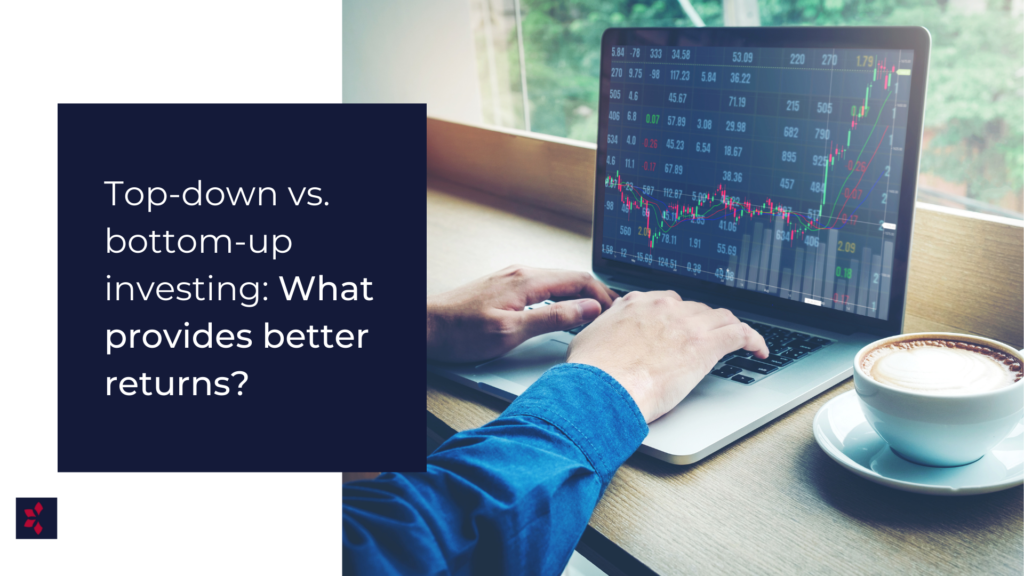Top-Down vs. Bottom-Up Investing: What Provides Better Returns?

Two of the most common investment analysis strategies are top-down and bottom-up investing, the former looking at bigger picture and more macro-economic factors and the latter at company-specific fundamentals and more micro-economic details. While both approaches have the same goal of identifying profitable stocks, this article looks at some of the benefits of a bottom-up investing strategy.
Top-Down Investing
Top-down investing focuses on big picture economic factors—macroeconomic indicators such as trends in unemployment, inflation, interest rates, GDP growth and so on that drive market, industry, and sector performances—which ultimately impact stock prices.
For example, suppose the Bank of Canada announces that there will be a drop in interest rates. A top-down investor may forecast that the homebuilding industry would benefit from an increase in new homes due to the lower cost of borrowing and may therefore purchase stocks in the homebuilding sector.
Bottom-Up Investing
Unlike top-down investing, bottom-up investing focuses on company-specific fundamentals—how an individual company within a sector performs compared to peers in the same sector.
For example, suppose a bottom-up investor performs a thorough analysis of a company in the agricultural sector and as a result determines that it is a good buy. While the agricultural sector may not be in favor at this time, by conducting company-specific research the investor determines that a specific stock in that sector is a good buy at the current price.
The bottom-up investor’s analysis will include a look into the company’s financial statements (financial ratios, how those figures have changed over time, and projected future growth), organizational and management structure, unique marketing strategy, and any other relevant company-specific information.
Despite conducting more stock-specific analysis, the investor will also look at the sector overall and compare the target stock to its industry peers to determine whether it is superior to its peers based on both financial metrics and market position.
Bottom-Up Strategy Has Shown Benefits Over The Long Term
If one company in a sector does well, this does not mean that all of the companies in the same sector will also do well. Put another way, a decline in a particular sector does not necessarily mean that there are negative consequences for strong companies in that sector. Since market conditions can and do change suddenly, an attempt to predict a stock’s performance based on macro-economic factors and trends may not always be successful.
The key takeaway is that the bottom-up investor’s objective is to pick companies with strong fundamentals and the ability to perform regardless of how the overall market may be doing, hence they spend a large amount of time analyzing companies to pick quality stocks that can withstand the test of time. Since bottom-up investors find companies built to survive challenging periods until market conditions return to normal, this strategy has shown benefits over the long term.
This content is provided for general informational purposes only and does not constitute financial, investment, tax, legal or accounting advice nor does it constitute an offer or solicitation to buy or sell any securities referred to. Individual circumstances and current events are critical to sound investment planning; anyone wishing to act on this content should consult with his or her financial partner or advisor.